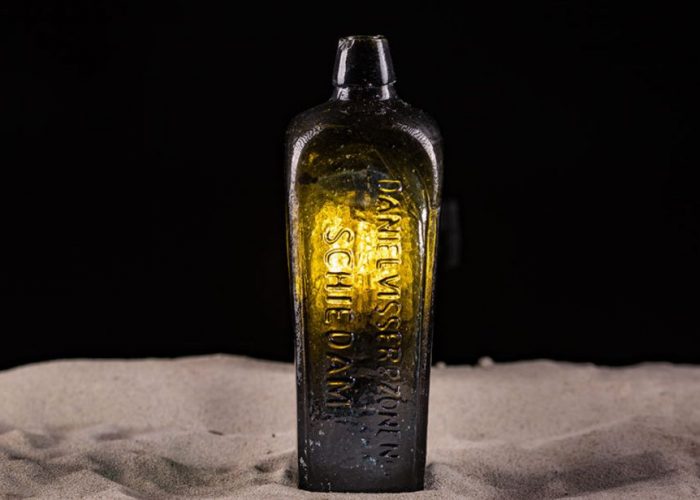



The document inside has been certified as genuine and dates back to 19th century Germany, with its survival heralded as a miracle. Remarkably, the bottle was found without a top.
MORE than 131 years after being thrown overboard, the world’s oldest message in a bottle has washed up on a beach in western Australia.
The bottle was found by Tonya Illman and Grace Ricciardo in the dunes near Wedge Island in January. Weeks of research and correspondence crafted a Sherlock-style web of clues that traced the historic note back to 19th century Germany.
The survival of the document has been heralded as a miracle, as the bottle was found wedged in the sand and without a lid after heavy rain and strong winds on the island, some 112 miles north of Perth.
Mrs Illman and her husband Kym placed the note in an oven to dry it out before unravelling it to reveal a set of coordinates and a date of 12 June 1886.
Mr Illman’s German was not quite good enough to deduce much more of the text, other than the letters “aula” in a naming field, which he guessed might mean the ship was called Paula.
From there the real investigative work began, and three days later the couple received confirmation from a curator of maritime archaeology at the Western Australian Museum that a boat named Paula was listed in an 1883 Lloyds Register, with a home port of Marseille.
It was a 320-ton German barque ship, later found to be on a voyage from Cardiff to what is now known as Indonesia.
But the French port listed in the register appeared to contradict the port written on the note, which started with an “E”.
It was suggested that the vessel could have been sold to new owners after 1883 and moved to a new home, and that theory was given merit by German maritime historian Christine Porr.
She advised the Illmans that one of her contacts had found mentions of Paula, along with a captain “O Diekmann”, in an 1887 journal of German Marine Meteorology.
Another reference to Paula was found in an 1886 Registrar Veritas, which listed “Haverkamp” as captain, and confirmed the home port as Elsfleth in Germany.
Further evidence was provided by the German Maritime and Hydrographic Agency, who confirmed the wording and printing were identical to messages held in their archives for the year 1886.
With the Australian museum having determined that the note was “consistent with cheaply made 19th century paper”, the German agency concluded that it was genuine.
As luck would have it, the note turned out to have originated from the agency itself, which back in 1886 was known as Deutsche Seewarte.
The bottle – thought to have originally held gin – was thrown overboard alongside many others during a decades-long research programme to produce drift maps.
According to agency archives, the last one to have been found was picked up in Denmark in January 1934 – and it was a match for the format of the one found on the Australian coast.
“This has been the most remarkable event of my life,” said Mrs Illman.
“To think that this bottle has not been touched for nearly 132 years and is in perfect condition, despite the elements, beggars belief.”
Her husband added: “It certainly consumed me for the first week.
“It was like solving a giant puzzle – and now that it’s been confirmed as legitimate, I can’t wait to share our excitement with others.”
Once confirmed by Guinness World Records, it will beat the existing record for the world’s oldest message in bottle by 23 years.
That was found at Amrum Island, Germany, in April 2015, more than 108 years after it was released into the North Sea by the Marine Biological Association in November 1906.
A one shilling reward was offered for its return.- news.sky.com